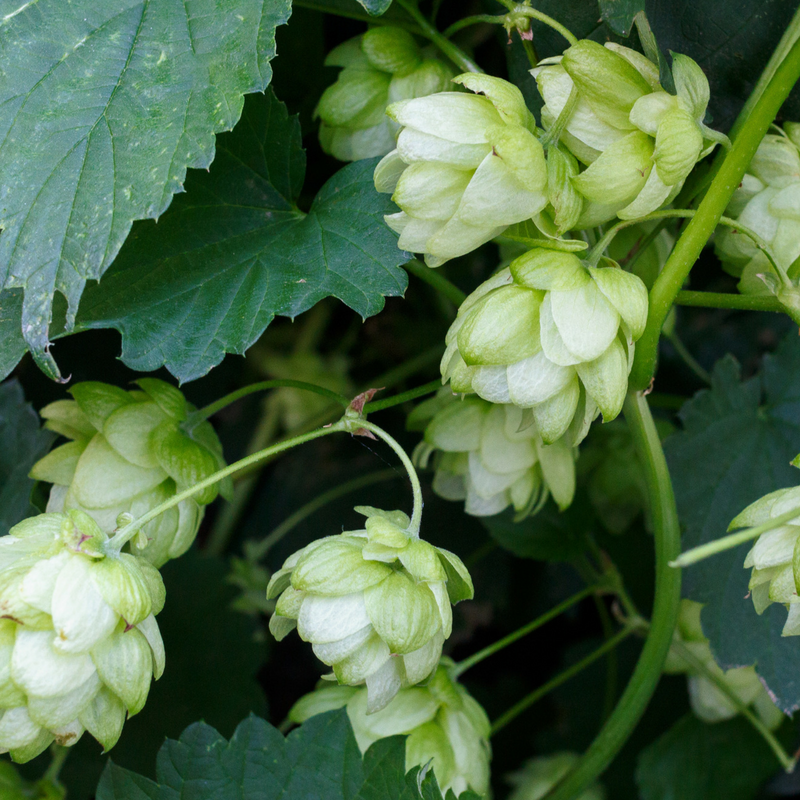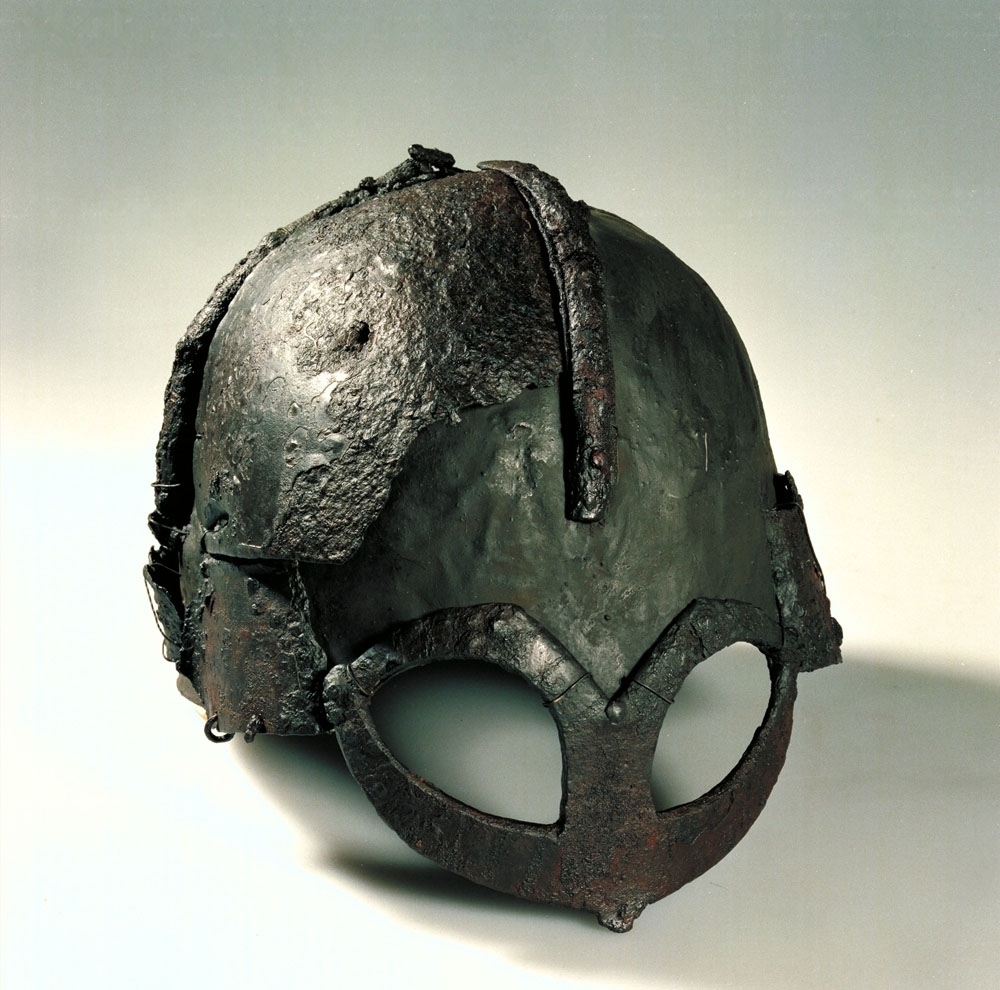As you may have noticed if you're following this blog, a lot of research goes into each Poesie collection. Could we just make some scents, slap theme-related names on them and call it a Norse/Jane Eyre/Twin Peaks inspired collection? Sure, but where's the fun in that? Our fragrances are inspired by delving deep into a new world and taking you with us on the journey. So, when the initial idea of a Viking and Norse mythology themed collection came up, who better to ask about Viking foodways than someone we knew was a fan of historical recipes? As it turns out, it was kismet. Because the answer we got was a thorough list of fruits, herbs, and much more that were based on historical evidence -- from an actual archaeologist with connections to the Vikings! The information she shared was so fascinating, we would have been remiss not to give you a peek into the topic.
The smart and lovely Karen is a former student of history and anthropology, who became very interested in pigment and cosmetics history after a foray into an archaeological career. She is now the owner of Crow & Pebble and makes stunningly beautiful eyeshadows and more. You'll definitely want to check them out! In the meantime, thanks for nerding out with us!
-- Joelle
As an archaeologist, the most common question I get has always been, “have you found any treasure?” This is a fantastic question and the answer is absolutely yes!
Of course, when they ask, they tend to mean precious gems and metals, beautiful works of art and jewellery. Sometimes they even mean impressive weaponry like swords and axes. These are incredibly rare, of course - that is why it is “treasure”. I haven’t found anything like this. Most archaeologists have not. Most of our finds are shards of broken pottery and little bits of animal bones.
Yes, National Treasure was actually a documentary. This is totally realistic.
So what is the treasure I’m talking about, then? Well - it’s the bits of pottery and animal bone. Oh, and dirt. Lots and lots of dirt. Buckets of it. These are the things we use to build a picture of what a past civilization might have been like.
When Joelle approached me about rebuilding the scents of the Viking Age, my thoughts initially went to recipe manuscripts from the time. Of course, that sort of written information simply doesn’t exist from then. So I started digging through my archaeological archives. The primary source of my research for rebuilding the scentscape of the Vikings was environmental sample studies. In order to get these, we would fill up buckets full of soil from a particular “context” and analyse what we found therein. A context is a section of the soil that filled up a hole in a certain period of time. By using a geological principle called stratigraphy, we are able to estimate the time period from which the soil contents come. If you’d like a very detailed explanation of how and why this works, you can read the foremost textbook on the subject here for free. If you’d like a basic overview, here is a good one! Using the data from Viking sites across Northern Europe, from Scandinavian and British sites primarily, I was able to give some suggestions as to what kinds of scents you might find in the Viking era. We use water to make organic materials like charcoal and plant seeds and pollen float to the top and strain these from the muddy water, which is then discarded. These bits of organic material let us know what kinds of foods were eaten and plants grown in a particular time period.
Of course, if you stepped through a time portal into the Dark Ages, the first scents to hit you would probably be somewhat offensive ones. Bathing was not a common practise among the peoples of Northwestern Europe, and the infrastructure for carrying sewage and waste away was not particularly developed, at all. However, if we take those things out of the equation, the Viking Home would have been wonderfully fragrant.
Environmental analyses show a wealth of fruit and spices at the disposal of the Vikings. Particular favourites were various types of berries, and especially plums. Plum pits have been found on many Viking sites throughout the Danelaw, Ireland and Denmark. In fact, plums were so popular that both domestic and imported varieties are found at the same sites, implying that the local crop did not nearly meet the demand for them. It is likely they were eaten both fresh and dried as prunes. The berries included cherries, bilberries, raspberries, strawberries and blackberries and were likely eaten fresh. Pears and apples were also quite popular. Peaches were extremely rare, but prized. A major part of the diet was nuts - particularly hazelnuts, although almonds, walnuts and acorns also occasionally make an appearance.
Vikings also grew large flower and herb gardens which would have included poppies, primrose, dandelion, coriander, dill, mustard, hops, sage and fennel. By looking at the travels of the Vikings, and knowing that they even managed to make their way down to Constantinople, in what is modern day Istanbul (we find viking rune graffiti in the Hagia Sofia), they would have access to variety of Eastern spices like black pepper, cinnamon, nutmeg, saffron, mace, ginger, anise, caraway and cumin.
The final few bits we normally find are the vegetables and grains, which included barley, rye and oats, and carrots, cabbage, radish, peas, string beans, cress and celery. So we know from our environmental analyses that the Vikings likely had very fragrant pantries!
So already we’re building a picture of the scent of Viking life, but what about the other parts of Viking life? Well, we know that they set up life in Northern Britain, and travelled as far as the Eastern coasts of North America and as far south as Turkey and perhaps into the Mediterranean. This we have gleaned from the Viking sagas and from finding viking artefacts within Native American and Mediterranean contexts. Their oceanic travels and sagas can also inspire the impression of scents, from the salt of the sea and the ambergris of whales, to the skin (or birch bark) canoes and birch tar associated with First Nations, to the pine forests and summer fruits of North America and the holy resins and incenses of the Middle East.
Though the Viking era seems to be all salt air, steel and blood on first glance, Archaeology tells us differently!
Further reading:
Pernille Rohde Sloth, Ulla Lund Hansen & Sabine Karg (2012) Viking Age
garden plants from southern Scandinavia – diversity, taphonomy and cultural aspects, Danish
Journal of Archaeology, 1:1, 27-38, DOI: 10.1080/21662282.2012.750445 http://dx.doi.org/10.1080/21662282.2012.750445
Carolyn Priest-Dorman (1999) Archaeological Finds of Ninth- and Tenth-Century Viking Foodstuffs https://www.cs.vassar.edu/~capriest/vikfood.html
Viking Graffiti, National Museum of Denmark. http://en.natmus.dk/historical-knowledge/denmark/prehistoric-period-until-1050-ad/the-viking-age/expeditions-and-raids/viking-graffiti/
L’Anse Aux Meadows, Viking Settlement in Newfoundland, Canada. UNESCO World Heritage Site http://whc.unesco.org/en/list/4
Gill Campbell, Lisa Moffett, and Vanessa Straker (2011) A Guide to the Theory and Practice of Methods, from Sampling and Recovery to Post-excavation (second edition) https://historicengland.org.uk/images-books/publications/environmental-archaeology-2nd/





